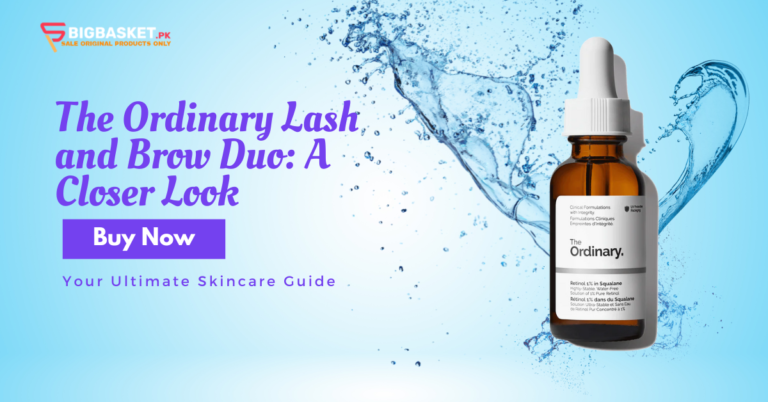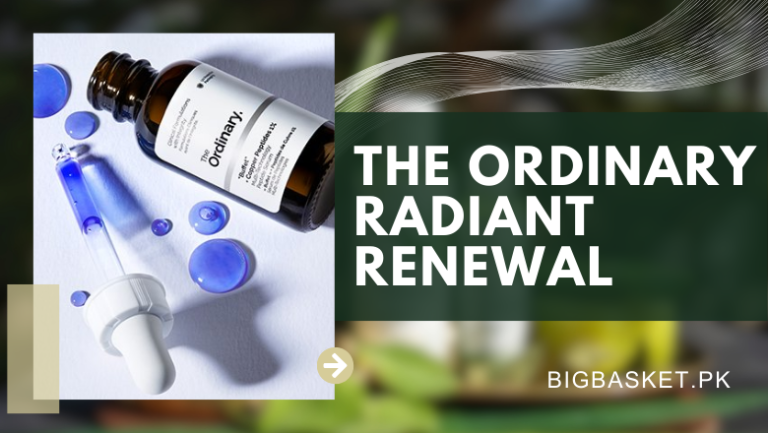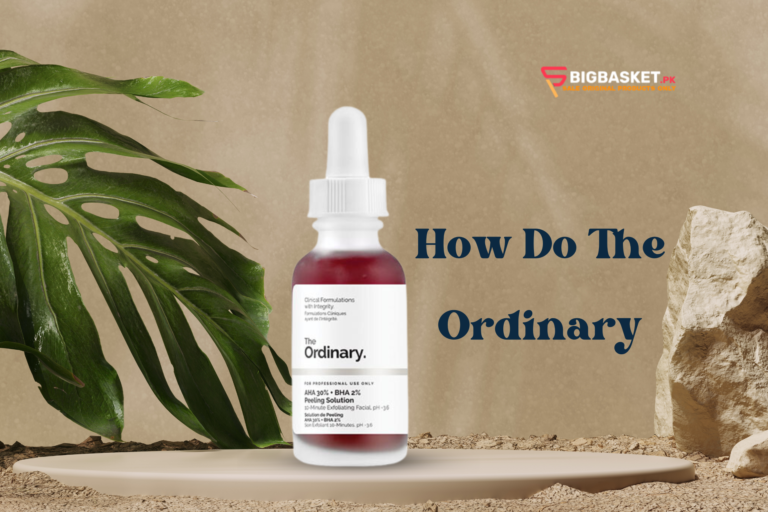Discover DECIEM: Your Ultimate Guide to The Ordinary Products
DECIEM’s The Ordinary has become a household name in skincare, known for offering high-quality, clinical formulations at affordable prices. Whether you’re a skincare beginner or a seasoned expert, this guide will provide you with all the information you need to understand The Ordinary’s products and how to use them effectively. From mastering how to layer products to extending their shelf life, we’ll cover everything you need to enhance your skincare routine. If you’ve ever found yourself confused by product expiration dates, ingredient interactions, or the best way to care for your skin post-sun exposure, this article is your go-to resource. By the end, you’ll feel empowered to make the most of your skincare routine and get the radiant skin you’ve always wanted!
Contents
- 1 Do The Ordinary Products Expire? Understanding Expiration Dates of The Ordinary Products
- 1.1 How to Properly Store The Ordinary Products
- 1.2 Signs That Your Ordinary Products Have Expired
- 1.3 What is the Order of The Ordinary Products? Step-by-Step Guide to Layering The Ordinary Products
- 1.4 Best Practices for Applying The Ordinary Products
- 1.5 Common Mistakes in The Ordinary Product Application Order
- 1.6 Do the Ordinary products expire?
- 1.7 What is the order of The Ordinary products?
- 1.8 How long does The Ordinary last?
- 1.9 What about The Ordinary after sun care?
- 1.10 Are there any side effects of The Ordinary niacinamide?
- 1.11 Can The Ordinary help with scars?
- 1.12 What are the benefits of using The Ordinary serums?
- 1.13 Can you give me a list of The Ordinary serums?
- 1.14 How should I use The Ordinary serums?
Do The Ordinary Products Expire? Understanding Expiration Dates of The Ordinary Products
Just like any other skincare products, items from The Ordinary come with a finite shelf life. After opening, most products will have a designated period in which they should be used for optimal results—usually indicated by a Period After Opening (PAO) symbol or an expiration date on the packaging. On average, The Ordinary products last anywhere from six months to two years once opened, but it’s essential to check the packaging as different formulations can have varying lifespans. For instance, products with antioxidants or Vitamin C can degrade faster due to exposure to air and light. Therefore, storing them properly and being mindful of their expiration dates will ensure that your skin benefits from the full potency of these powerful products.
How to Properly Store The Ordinary Products
Proper storage of skincare products is key to preserving their effectiveness, especially when dealing with active ingredients like those found in The Ordinary’s lineup. Exposure to light, heat, and humidity can compromise the integrity of active ingredients, so it’s best to store products in a cool, dry place away from direct sunlight. For example, keeping serums like The Ordinary’s Niacinamide or Hyaluronic Acid in a bathroom cabinet instead of on a counter can prolong their potency. Some products may even benefit from refrigeration, especially those with Vitamin C or Retinoids, as lower temperatures can slow the degradation of these sensitive compounds. Always make sure to seal the bottles tightly after use to avoid excess air exposure, which can also cause the product to oxidize faster.
Signs That Your Ordinary Products Have Expired
It’s essential to be able to recognize when a product has passed its prime to avoid skin irritation or compromised results. Common signs of expired products include noticeable changes in texture, color, or smell. For example, if your serum has separated, become thicker or watery, or developed an unusual odor, it’s likely time to dispose of it. In addition, products that have turned yellow or brownish, particularly those containing Vitamin C, have likely oxidized and are no longer effective. Using expired products can also lead to skin irritation, so it’s always better to be cautious. If you suspect something has gone bad, it’s safest to toss it out and replace it.
What is the Order of The Ordinary Products? Step-by-Step Guide to Layering The Ordinary Products
Layering products in the correct order is crucial to ensure that each one penetrates the skin properly and works effectively. A general rule is to start with water-based products and finish with oil-based products or thicker creams. Begin with a cleanser, followed by water-based serums like The Ordinary’s Niacinamide or Hyaluronic Acid. After that, move on to oil-based serums or treatments, such as Retinol or Squalane, and finish with a moisturizer to lock everything in. Sunscreen should always be the last step in your morning routine to protect your skin from harmful UV rays. By layering properly, you’ll ensure that each product works optimally without blocking the absorption of the next one.
Best Practices for Applying The Ordinary Products
When applying The Ordinary products, a little goes a long way. Using too much product not only leads to wastage but can also overwhelm the skin, potentially causing irritation. A few drops of serum are often enough to cover your entire face. Gently pat or tap the product into your skin, rather than rubbing it in, to promote better absorption. Allow each layer to absorb fully before applying the next, especially when using multiple serums in your routine. Giving each layer a minute or two to dry can help prevent the sticky feeling that can sometimes occur when products are layered too quickly.
Common Mistakes in The Ordinary Product Application Order
One common mistake many users make is combining too many active ingredients at once, which can lead to skin irritation or even compromise the effectiveness of certain products. For instance, layering Niacinamide and Vitamin C together may reduce the potency of both products and lead to redness or irritation for sensitive skin. It’s important to know how different actives interact with each other and avoid using conflicting ingredients at the same time. When in doubt, it’s safer to alternate days for stronger actives like Retinol and Vitamin C, or consult a dermatologist if you’re unsure about how to incorporate multiple products into your routine.
Do the Ordinary products expire?
Yes, The Ordinary products do expire. Most products feature a Period After Opening (PAO) symbol on the packaging, which tells you how long they are good for once opened. Typically, The Ordinary products last between 6 to 12 months after opening, although some can last up to two years. It’s essential to keep an eye on these dates to ensure you’re using products when they’re at their most effective. Expired products can lose their potency and may cause irritation.
What is the order of The Ordinary products?
The order in which you apply The Ordinary products is crucial for achieving the best results. The general rule is to layer products from the thinnest consistency to the thickest. Start with a cleanser, then move on to toners, followed by water-based serums such as Niacinamide or Hyaluronic Acid. Next, apply oil-based serums or treatments like Retinol or Squalane. Finish with a moisturizer and, in the morning, always apply sunscreen as the final step.
How long does The Ordinary last?
The shelf life of unopened The Ordinary products is typically around 2 to 3 years. However, once opened, you should follow the PAO symbol to ensure you are using the product within the recommended time frame. Some products, particularly those with active ingredients like Vitamin C or Retinoids, may degrade faster due to exposure to air and light, so using them consistently after opening is ideal for maximum effectiveness.
What about The Ordinary after sun care?
After sun care is critical to restoring and hydrating skin that has been exposed to harmful UV rays. The Ordinary has several products ideal for after-sun care, such as their Hyaluronic Acid and Squalane, which help to rehydrate the skin. You can also use Niacinamide to reduce redness and calm inflammation. Always remember that sun protection is vital, so incorporating sunscreen into your routine is essential to prevent future damage.
Are there any side effects of The Ordinary niacinamide?
While Niacinamide is generally well-tolerated and safe for most skin types, some people may experience mild side effects such as redness, irritation, or breakouts when they first introduce the product to their routine. It’s always recommended to start with a lower concentration or do a patch test to see how your skin reacts. If irritation persists, it’s best to reduce usage frequency or consult a dermatologist.
Can The Ordinary help with scars?
Yes, certain products from The Ordinary can be beneficial for treating scars. Ingredients like Alpha Arbutin and Retinoids are effective at reducing hyperpigmentation and promoting cell turnover, which can help fade scars over time. For example, The Ordinary’s Alpha Arbutin 2% + HA targets dark spots, while Retinol can aid in improving skin texture and scar appearance. Consistency and patience are key when using these treatments for scarring.
What are the benefits of using The Ordinary serums?
The Ordinary serums offer a wide range of benefits depending on the active ingredients they contain. For example, Hyaluronic Acid helps with hydration, Niacinamide works to reduce oil production and minimize pores, and Retinol promotes cell turnover to address signs of aging. The ability to target specific skin concerns makes The Ordinary’s serums a favorite among skincare enthusiasts. With regular use, you can expect improvements in skin texture, tone, and overall radiance.
Can you give me a list of The Ordinary serums?
Some of the most popular serums from The Ordinary include Niacinamide 10% + Zinc 1%, Hyaluronic Acid 2% + B5, Alpha Arbutin 2% + HA, and Retinol 0.2% in Squalane. Each serum targets different skin concerns, allowing you to build a custom routine tailored to your needs. Other notable serums include Buffet, which addresses multiple signs of aging, and Ascorbic Acid 8% + Alpha Arbutin 2%, which targets hyperpigmentation and brightens the skin.
How should I use The Ordinary serums?
For the best results, apply The Ordinary serums after cleansing and toning, following the rule of applying products from the lightest to the heaviest consistency. Use just a few drops of each serum and pat them into the skin, allowing each layer to fully absorb before applying the next product. Always follow with a moisturizer to seal in the serums, and if it’s daytime, don’t forget to finish with sunscreen to protect your skin.






